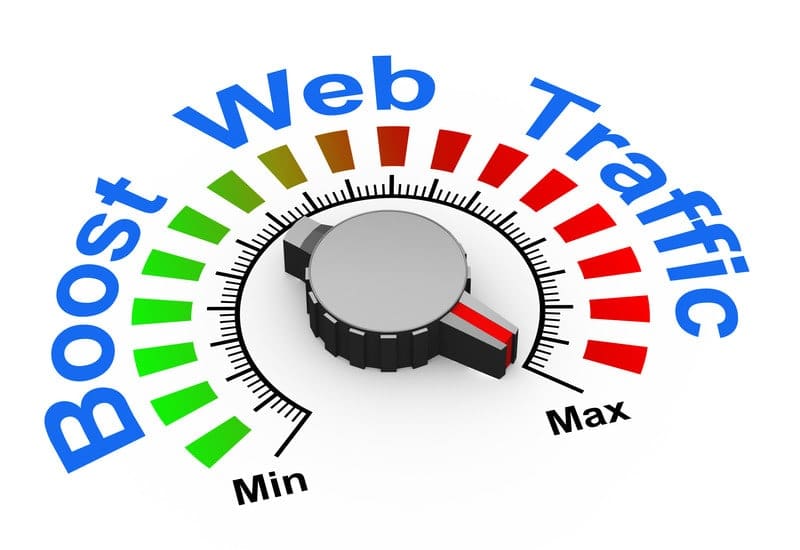Qualified site traffic means more sales.
Several decades ago hi-tech trade shows blanketed the landscape. The largest was Comdex. It drew more than 100,000 attendees. Millions were spent by exhibitors for show floor space. All competed for foot traffic through their exhibit. Most used giveaway gimmicks to draw people in.
Getting traffic like that did not qualify the person. Nor does it today. Better traffic to your offer is qualified traffic. Qualified traffic turns into more sales. It matches a solution to a known problem. Back then companies splashed their exhibits with logos and product names. However, the booth signage usually didn’t say what the product achieved.
Show attendees were looking for solutions to their problems. The problem-solving exhibitors did a poor job talking to the right traffic. Someone with a problem solved by the exhibitor’s product.
What is Qualified Traffic?
Qualified traffic consists of the people who visit your website or landing page
and are most likely to become leads or customers.
Making money online requires an understanding of sales funnels. The common method is to offer something of perceived value in exchange for a prospect’s email address.
That’s the first step. But is it? Before starting a marketing campaign know these four things.
- Choose your niche carefully. Is it broad enough to drill down and differentiate your offer from competitors?
- Know your target buyer: What is their need? What problem bothers them most? Are they a buyer? How do you qualify them?
- Know your product thoroughly. What problem does it solve? How would you describe it to anyone you meet? Why would anyone want to pay for it?
- How can you put your offer in front of your ideal customer? Where do they hang out? Is your offer using the right language (words, not other than English)?
Hook, Story, Offer
This is a sales framework explained by Russel Brunson in his excellent book, “Traffic Secrets“. Click on the link and order your free copy of Traffic Secrets.
The hook

The hook grabs the ideal customer’s attention. Then the story builds a connection with the ideal customer. The offer may be a sales pitch for the product. Or an enticement to give up their email address. That leads your ideal customer into a sales funnel.
Long before the Internet when direct mail dominated marketing programs Psychology Today magazine got a great response with one simple question. On the envelope was printed “Do you close the bathroom door when alone in the house”? Decades ago that simple question achieved a higher open rate than other mailings.
Your job is to generate a great hook.
The Story

The story takes over when your hook is set. I find most stories too long. I’m a bottom-line person. Get to the point. Give me the goods. But do it in a way I can easily see myself in the story. I want to know you are like me. You know me. You understand my wants or needs. And you guide me to take action.
It is said your product is determined by the need or wants it satisfies. Domino’s product is not pizza. It is convenience. Rolex sells jewelry, not watches. How does your prospect see your product? Don’t forget there is a lot of emotion in buying a product. Study the products at the checkout counter. They are impulse buys. The items are selected to trigger your psyche to make a purchase virtually without thinking.
Use this link to a post guiding you to better storytelling.
Long Form vs. Short Form
The length of your story is up to you. I prefer short form. However, Publisher’s Clearing House discovered many years ago that a more involved sweepstakes entry form got a higher response rate. If you ever looked at their mailing you know what I mean. The complex many-page entry is like playing a board game. A complicated board game.
This link takes you to a post discussing long form in detail.
The Offer

Don’t confuse your prospect. Keep the offer simple. Whether it is a trip wire, upsell, or primary product make the offer easy to understand. As Denzil Washington’s character said in the movie Philadelphia, “Explain This To Me Like I’m a Two-Year-Old”.
Don’t be shy or coy. Don’t mislead. Know the product. Know the customer. Know the solution the product provides. Then sell, sell, sell. Here’s an exercise that may help you. Think of a simple problem in your life. Perhaps dusting your house. It seems like dust accumulates daily. How would you market a product to solve the daily dusting chore?
Make the exercise an easy one and not a time waster. When in a retail store look at the products and ask yourself what problems they solve. Spend a few moments online studying the ads. Analyze the offers. Look behind the headlines.
I’m told the #1 selling Costco product is bananas. And Home Depot sells more units of WD-40 than any other product. Lowe’s DIY sells more appliances than any other retailer in the USA. On Amazon, the #1 home and kitchen category selling item is a $45 beverage tumbler.
Conclusion
There’s a market for just about anything. I met a fellow making a living selling exotic insects online. Not many people know his site and products. He knows how to get good traffic. Good traffic is customer prospects experiencing a problem your product solves. Like the store manager earlier in this post many online marketers don’t know how to target viable prospects.
Not everyone coming through the retail door is a prospect. Learn how to identify your ideal customer. Then go after them.
# # #
Thank you for reading this post. Please share it with friends and associates.
Follow me on major social media sites including – Tumblr Facebook Linkedin Pinterest
Check out my Youtube channel. I post short and very informative videos.
©2023 JoeArodotCom
